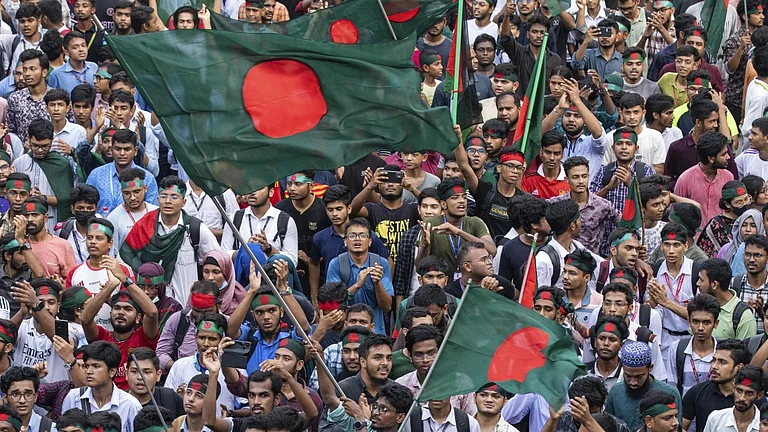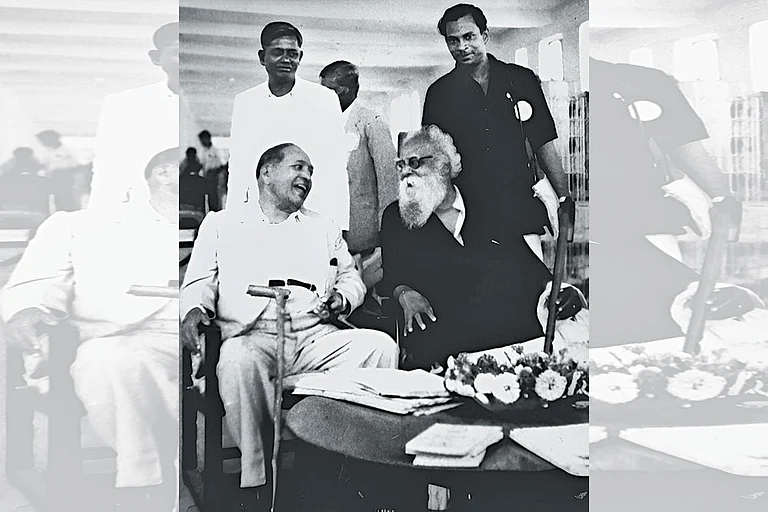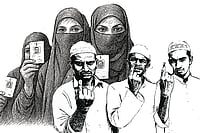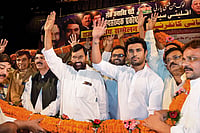Anticipating burgeoning bigotry and communalism in independent India, the founding experts of our Constitution laid down two important fundamental rights to safeguard against ethno-national conflicts and riots. Article 25 provides right to freedom of conscience and free profession, practice and propagation of religion and Article 26 guarantees all religious denominations freedom to manage their religious affairs. Both provisions, in essence, sought ‘equal respect’ for all religions by the State and by members within the civil society, for what Nehru explained as ‘‘free play for all religions, subject only to their not interfering with each other or with the basic conceptions of our State.” The courts, while interpreting these provisions, are expected to be more sensitive to religious and legal pluralism and be respectful of religious freedoms, celebratory neutrality and reformatory justice.
Two recent events, one where a Railway Protection Force (RPF) constable shot three Muslim men on a train and shouted out, ‘‘If you want to live and vote in Hindustan, I’m telling you its only Modi and Yogi,” and the second, the communal violence leading to bulldozing of Muslim houses by the State at Nuh in Haryana, are simply travesties and perversions of the idea of religious freedom as enshrined in the Constitution. Why do Hindu-Muslim riots erupt at regular intervals and more so when elections seem to be around the corner? Why do religious processions, such as the ones in Nuh, which are essentially the carrier of tensions and violence, aim to attack the religious symbols and bodies of the ‘other’? What kind of hate had the RPF constable nurtured against Muslims that he didn’t even think about his own ruin when committing murder? Can we see this Hindutva-engendered hatred, extremism and fanaticism against Muslims as the cultural product of Islamophobia? Perhaps yes, or maybe not.
Muslim ‘Others’
Following the 9/11 terrorist attack in America, a particular anxiety about Muslim ‘others’ led to increased Islamophobic hate crimes and suspicion and outright hostility against Muslims. Runnymede Trust–a British race equality and civil rights think tank–popularised the term Islamophobia in the 1990s and claimed that the emotions of dread, hatred, fear and dislike are at play against Muslims leading to intolerance and discrimination. Some scholars prefer the words ‘anti-Muslim prejudice’, ‘anti-Islam prejudice’, ‘anti-Muslim bigotry’, ‘anti-Islamism’, ‘anti-Muslim hate’, and even, oddly enough, ‘anti-Muslims’, with each having their own definitions. At the core of the notion of Islamophobia is the fear of Islam, as a religion, taking over other non-Islamic religions, Christianity in the West and Hinduism in India. Also, Islam is seen as a major form for the construction of political and cultural identity. Samuel Huntington’s (in)famous ‘clash of civilisations’ thesis gave credence to the notion of Islamophobia, reducing individuals into a purely religious entity whereas humans, in reality, have multiple identities.
Extreme Violence
Islamophobia in India is understood, particularly by Right-wing religious conservatives, as a fear of disrupting the majoritarian construction of India as a Hindu place that posits upper-caste Hindus as the normative national subject, and Muslims as backward, foreign and potentially dangerous. This enables extreme violence against Muslims, making them targets of the State’s security apparatuses and bulldozing their homes to force them to relocate to particular neighbourhoods where they may feel more secure.
The Muslim presence in India dates back to 630 CE, when Islamised Arab merchants landed in coastal Konkan, Gujarat and Malabar and with the spread of Islamic culture, conversions of Indians to Islam began. The orientalists, nationalists and Hindu-nationalists saw Muslims and Mughals as ‘foreign invaders’ and ‘oppressors’ of Hindus and the British cast Muslims, after the 1857 revolt, as the fanatics who orchestrated it. Arya Samaj, a vigorous Hindu revivalist movement, viewed Islam as an intrusion to Hinduism and therefore attacked Islam to counter the Tablighi Jamaat ascendance in the 1920s. V D Savarkar’s book Hindutva: Who is a Hindu? (1928) claimed that Hindus are the ones who live in Hindustan, the land beyond the Indus, between the Himalayas and the Indian Ocean, speaking either Sanskrit or Hindi, thereby, Hindus having geographical, ethnic and linguistic unity. M S Golwalkar further pushed Hindutva by giving it an ideological character in his book We, or Our Nationhood Defined (1938), in which Muslims were sought to give allegiance to Hindu symbols of identity as the embodiment of the Indian nation. Bankim Chandra Chatterjee, in his novel Anandamath (1882), aroused anti-Muslim sentiments by invoking the ‘Hindus-are-in-danger’ notion. The presence of Islamophobia, to whatever extent, owes to a great deal to Savarkar’s understanding of a Hindu as someone who typically resides in and considers the Indian subcontinent as his fatherland, is a descendent of Hindu parents and acknowledges this land as holy (Punyabhu).
The Hindutva movement of the Right-wing predicates its politics on Islamophobia as it constantly gets reminded of political insecurity due to the misconstrued notion of the Muslim demographic threat. A belief that Muslims in India are plotting a ‘demographic-jihad’ to capture power runs deep in the Hindutva camp. Consequently, the bogey of ‘love-jihad’ and polygamy are raised to counter it. Muslims are equated with ‘Mughal conquerers’ and the conquerors are defined not in terms of ethnic heritage or place of origin, but rather, a religion—Islam. Hindutva forces believe that the Muslim rulers during the medieval period used ‘the sword’ to convert Hindus.
Responding to the bugbear of Islamophobia
India, that is Bharat, is a diverse land of all possible denominations, and also a union of states. The diversity aspect posits as a pluri-cultural nation and there exist multiple religions, where people find meanings in different ways of life. The Constitution is undergirded by the ideas of freedom, liberty, equality, justice and integrity. The fundamental rights chapter forms the core of the political values enshrined in the Constitution. The Constitution doesn’t leave any space for Islamophobia. In fact, inciting hatred against any religious group is an offence under the penal code. So why raise the bugbear of Islamophobia?
Muslims in India need to respond to it and therefore, for an authentic response, they must look both inward and outward. The Muslim threat as perceived by Right-wing Hindus may be real or construed. But the real question is how to build up trust between the two religions so that Islamophobia is staved off. As long as Muslims do not condemn their own bigotry and fundamentalism, it would seem a threat to non-Muslims. For instance, every time a temple or church is vandalised in Muslim-majority countries such as Pakistan or Bangladesh, Muslims, particularly the practising ones, must condemn it outright.
The politics of polarisation in India rests on deepening the social divide on the basis of religion and Islamophobia acts as a tool to consolidate Hindus for easy political mobilisation in the electoral democracy. In pursuit of political power, religious narratives and practices are overplayed and a sort of binary of hate is constructed between Hindus and Muslims. But at the core of both Hinduism and Islam, lay the ideas of love, acceptance and togetherness that offset Islamophobia and Hindutva.
(Views expressed are personal)
(This appeared in the print as 'In Search of Peace')
Tanvir Aeijaz teaches public policy at Delhi University



























